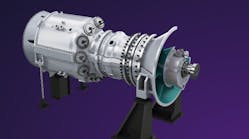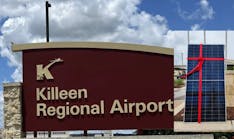Soda Ash Producer Solvay Starts Regenerative Thermal Oxidation to Decarbonize Trona Mining in Wyoming
Belgian chemical firm Solvay has officially inaugurated its regenerative thermal oxidation (RTO) process at its Green River, Wyoming plant, as part of the company’s efforts to reduce greenhouse gas emissions (GHG) and drive sustainable growth in operations.
The emissions control technology for the trona mining industry and the recent coal phase-out hopefully will not only help reduce GHG emissions at the plant by up to 20 percent annually but also support achieving a 4 percent reduction in emissions at Group level by 2025.
The plant is one of Solvay's seven soda ash facilities worldwide and is a supplier to essential industries, providing soda ash to manufacture glass, solar panels and lithium carbonate used in EV batteries and bicarbonate used in a wide range of applications including food, feed, cosmetics, pharmaceuticals, air pollution control.
A regenerative thermal oxidizer destroys volatile organic compounds in process exhaust air. In one form, ceramic beds capture and release heat while trapping air pollution particles.
“This system strengthens Green River’s position as a U.S. benchmark for sustainable soda ash production and marks a key step in reducing our global carbon footprint,” said Philippe Kehren, Solvay CEO.
Currently, the expansion of soda ash production capacity by 600 kilotons is under progress and is expected to be completed by early 2025. Additionally, global export capacity is planned at the Port of Vancouver USA by early 2026, supporting Solvay’s supply chain with an exact logistic approach.
Under the terms of the agreement first announced in early 2023, Conifer Systems was contracted to design, manufacture and install a solution to cut the greenhouse gas (GHG) emissions from Solvay’s trona mine and soda ash production facility.
Show the Way to Decarbonization Planning
Trona is the evaporative mineral used in sodium carbonate production. The trona found near the Green River formation in Wyoming is considered perhaps one of the largest deposits of the mineral worldwide, although it’s also found in quantity in California, Botswana, Egypt and Turkey.
Frontier Carbon Solutions and the School of Energy Resources at the University of Wyoming are working on a carbon storage project in the region to reduce carbon emissions from the trona and other mining operations.
Soda ash corporately is valued at about a $20 billion market worldwide and growing 4% annually, according to a report by Future Market Insights Inc.
Many Paths to Net Zero within All Industrial Sectors
Track New Projects by Subscribing to the Free EnergyTech E-Newsletter





